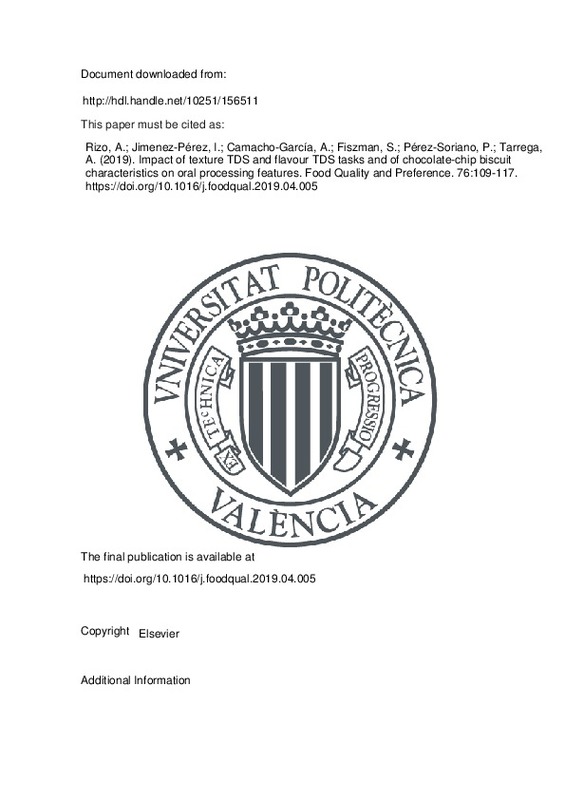JavaScript is disabled for your browser. Some features of this site may not work without it.
Buscar en RiuNet
Listar
Mi cuenta
Estadísticas
Ayuda RiuNet
Admin. UPV
Impact of texture TDS and flavour TDS tasks and of chocolate-chip biscuit characteristics on oral processing features
Mostrar el registro completo del ítem
Rizo, A.; Jimenez-Pérez, I.; Camacho-García, A.; Fiszman, S.; Pérez-Soriano, P.; Tarrega, A. (2019). Impact of texture TDS and flavour TDS tasks and of chocolate-chip biscuit characteristics on oral processing features. Food Quality and Preference. 76:109-117. https://doi.org/10.1016/j.foodqual.2019.04.005
Por favor, use este identificador para citar o enlazar este ítem: http://hdl.handle.net/10251/156511
Ficheros en el ítem
Metadatos del ítem
| Título: | Impact of texture TDS and flavour TDS tasks and of chocolate-chip biscuit characteristics on oral processing features | |
| Autor: | Rizo, A. Jimenez-Pérez, I. Fiszman, S. Pérez-Soriano, P. Tarrega, A. | |
| Entidad UPV: |
|
|
| Fecha difusión: |
|
|
| Resumen: |
[EN] The objective of the present study was to investigate differences in oral activity when biscuits of the same type but with subtle composition differences are consumed and how performing a Temporal Dominance of Sensations ...[+]
|
|
| Palabras clave: |
|
|
| Derechos de uso: | Reconocimiento - No comercial - Sin obra derivada (by-nc-nd) | |
| Fuente: |
|
|
| DOI: |
|
|
| Editorial: |
|
|
| Versión del editor: | https://doi.org/10.1016/j.foodqual.2019.04.005 | |
| Título del congreso: |
|
|
| Lugar del congreso: |
|
|
| Fecha congreso: |
|
|
| Código del Proyecto: |
|
|
| Agradecimientos: |
|
|
| Tipo: |
|







![[Cerrado]](/themes/UPV/images/candado.png)


